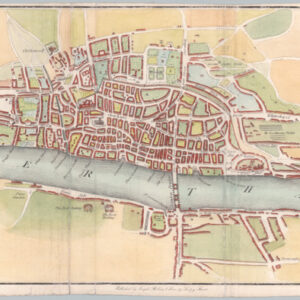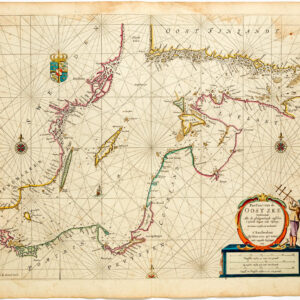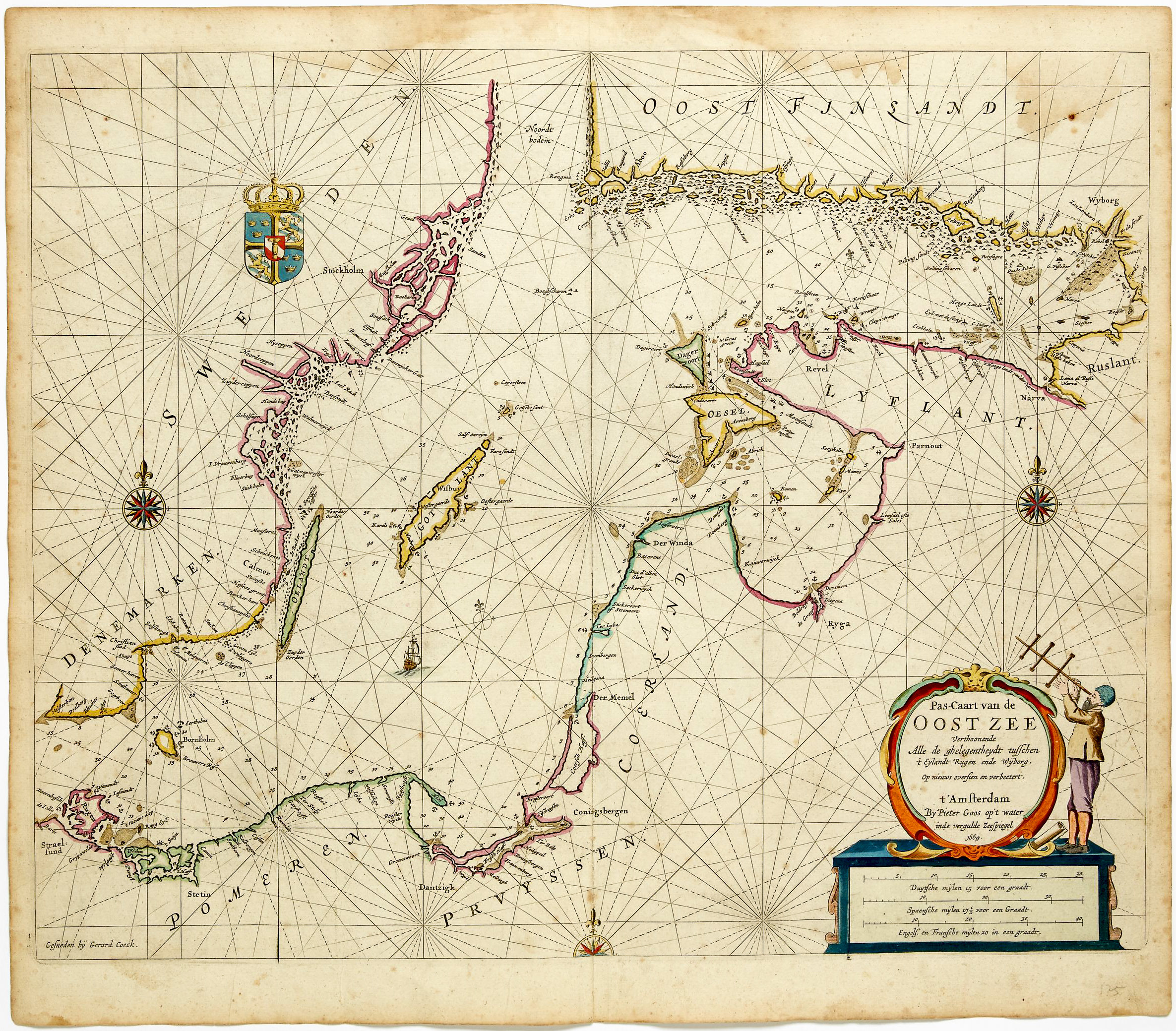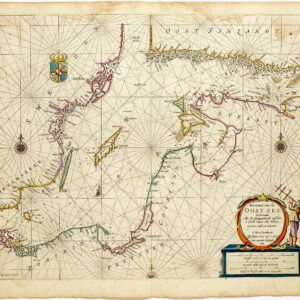The famous Nolli wall map of Rome: one of the finest urban plans ever made.
Alla Santità di Nostro Signore Papa Benedetto XIV La Nuova Topografia di Roma…
$35,000
1 in stock
Description
Giambattista Nolli’s seminal map, La Nuova Topografia di Roma, is one of the key milestones in the history of urban mapping. This monumental 12-sheet map, measuring a 6.75 by 5.5 feet when combined, is not just one of the most important historical documentations of the Eternal City but a fundamental paradigm shift in the methodology of accurately representing complex cityscapes. It is undoubtedly among the most spectacular urban views ever created and continues to be one of the most desirable wall maps in existence.
Nolli, who trained as a surveyor in Milan, released his map in 1748 after more than twelve years of intensive data collection and compilation. Our set includes the often-missing 4-sheet key. These indices identify no less than 1,320 distinct places on the map, making it as comprehensive an overview of the city as any public record or municipal office could offer at the time. Beyond the urban sprawl, Nolli carefully delineates field systems, farms, parks, and gardens to the very edges of the map.
The map is dedicated to Pope Benedict XIV and features a fantastic architectural scene along its bottom edge that celebrates the Eternal City. On the left, we see the ruins of ancient Rome’s former glory. On the right side, we see a personification of the Catholic Church being crowned, with surveyors at work and Michelangelo’s Capitoline Hill in the background.
Unparalleled detail
The Nolli plan is a masterpiece of Baroque cartography, defined by its technical finesse. From the moment it was published, it became the go-to cartographic reference for Rome’s layout and topography, and it retained this prestigious status for over two hundred years. Nolli’s map was so advanced that it served as the authoritative cartographic template for governmental and municipal planning in the city until the 1970s. The variety of present-day interactive websites and GIS projects based on the Nolli plan attests to its enduring appeal. There is even an App.
An exalted combination of monumentality, accuracy, and detail characterizes the map. It depicts everything from the vestiges of antiquity to the most recently constructed palazzos. We find churches, streets, fountains, parks, public offices, aqueducts, and the plethora of cultural landmarks for which the city is rightfully famous. Nolli’s large team of architects and mapmakers carefully surveyed and plotted thousands of buildings, laying out each unit’s ground floor in an almost frenzied drive towards completeness. Nolli’s rendition of the Spanish Steps, then a relatively new installation at the time (connecting the new Spanish Embassy on the hill to the piazza and Holy See below), even includes the slight asymmetry in the steps caused by the limited space available for its construction.
Contrasts of light and dark
Nolli built his masterpiece on a much older map created by Leonardo Bufalini in 1551. Like Nolli’s map, this also used the contrast between darkness and light to distinguish buildings and open spaces, but unlike Nolli’s map, the visuality of the Bufalini plan was binary and simplistic. Nolli may have taken the idea to heart, but he elevated the concept to an entirely new level (and actively encouraged comparison between the two). Among the many innovations Nolli introduced was shading to distinguish different types of space. While some buildings were shaded to indicate private ownership, others were clearly outlined but left blank inside, designating them as built public spaces (e.g. the Pantheon/837). Open public spaces, such as the Piazza Navona (605) or the Piazza di Espagna (395), are not outlined per se but delineated by the many buildings surrounding them.
Among the public buildings, churches and historical sites stand out in particular. From a technical point of view, this is because Nolli has outlined them in thick dark blacks and endowed many with striking internal features. Spaces like the Square and Basilica of St Peter (1285-86), the Colosseum (936), and the Diocletian Baths (203) appear as they would in an architectural plan drawing.
In a stroke of artistic genius, Nolli contrasts the deep black outlines of standing monuments with white outlines denoting those ancient monuments that exist only in memory or ruin (e.g. Tempio della Pace/74 or parts of the Palatine Hill complex/930). We find this intricate visual nuance throughout the map: qualitative features include filling the Tiber with curve lines to replicate the effect of flowing water or using distinct symbols to indicate open or closed drains. Including such minutia constituted an entirely new dedication to accuracy and detail and cemented Nolli’s authority as a surveyor and mapmaker.
A new Rome
There were other reasons for the level of visual nuance than simply plotting the city’s landmarks. For one thing, employing contrasts and hatching to delineate different forms of space causes the street grid to stand out. Much of the street organization depicted on this map can be traced back to the Baroque replanning of Rome. The process was both funded and guided by the Vatican. It entailed redesigning some of the city’s great thoroughfares to connect the Eternal City’s religious buildings. Note, for example, how three main streets – the Strada de Ripetta, the Strada del Corso, and the Strada del Babuino – radiate from the Piazza del Popolo (403) to cut through the old city, linking every church along the way. That the map indeed emphasized this holy connectivity is not surprising since the immense job of mapping Rome was commissioned by Pope Benedict XIV (1675-1758) himself. The purpose was not only to create a new and reliable map of the Eternal City but to create a tool for demarcating the city’s fourteen districts.
Census
The OCLC lists copies of the original Nolli Map at the British Library (no. 1120064845), Bibliothèque national de France (no. 494958659); as well as the Bayerische Staatsbibliothek and Munich University (no. 645822414).
For an idea of the plan’s monumentality, check out this video: https://www.youtube.com/watch?v=cHYDFkWeK9o
Cartographer(s):
Giambattista Nolli (1701 – 1756) was an Italian architect, surveyor, and mapmaker best known for his ichnographic plan of Rome, known as the Nolli Map. He was born in 1701 in Castiglione d’Intelvi near Como. As a young man, Nolli moved to Rome to train and work as an architect under the patronage of the Albani and Corsini families.
In addition to his hugely influential map from 1748, Nolli worked on the churches of Sant’Alessio on the Aventine Hill (1743) and Santa Dorotea in Trastevere (1751–1756).
Condition Description
Superb, clean, and bright. Map is twelve unjoined sheets, key is four unjoined sheets, plus the title page.
References






